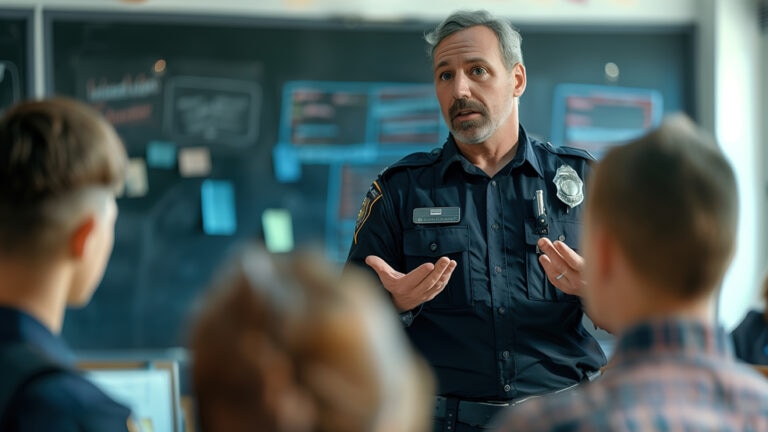
In recent years, there has been a disturbing rise in instances of teachers abusing special needs students within the school environment. This issue not only poses significant risks to the vulnerable students involved but also raises serious concerns about the effectiveness of current staffing practices, training protocols and overall school culture. To combat this alarming trend, schools must take a proactive approach by addressing these key areas: staffing issues, training, school culture and consequences of inaction.
Tackling staffing issues proactively
The recruitment and hiring process is a critical component of creating a supportive educational atmosphere. Schools must anticipate staffing needs early and plan ahead to ensure that gaps do not lead to rushed hiring decisions, which often result in selecting candidates who are not the right fit for special education roles. Leveraging vendor partnerships can help fill vacancies quickly, but it’s crucial that this does not compromise the thoroughness of the recruitment process.¹
Conducting extensive interviews and full background checks are essential steps in hiring staff who are both qualified and genuinely dedicated to the well-being of special needs students. Offering competitive pay is also vital in attracting high-quality talent, thereby reducing turnover and ensuring continuity in the support provided to students.²
Comprehensive and continual training
Training is fundamental for all staff working with special needs students. Initial training prior to entering the classroom is crucial, but ongoing professional development must be prioritized.³ Training should be specific to the needs of students with conditions such as autism or ADHD, ensuring that educators are equipped to meet their unique challenges.⁴
In situations where restraint is necessary, it must be carried out responsibly. Only authorized staff who have undergone documented and approved training should be involved, with consent from parents or guardians.⁵ Consulting with special education experts and behavior analysts can provide valuable support to educators, helping them manage Individualized Education Programs (IEPs) and classroom dynamics effectively.⁶
For added transparency, the use of cameras in classrooms — where legally permitted — can enhance oversight, with administration regularly monitoring the footage to ensure compliance with ethical standards. Additionally, maintaining an unobstructed view into classrooms by avoiding window coverings ensures visibility and accountability.¹
Cultivating an open and supportive culture
Creating a positive school culture is essential for preventing abuse and promoting accountability. Administrators must establish clear expectations for reporting concerns or observations of inappropriate behavior, encouraging immediate and open communication about any issues.⁷ These expectations should be set during staff orientation to lay the groundwork for a transparent and trusting environment. Schools should also clearly communicate reporting protocols, providing contact information for designated personnel and offering tip lines for anonymous reporting.² Leadership must actively oversee classroom management through regular in-person observations to ensure healthy teacher-student interactions.⁶
When issues arise, swift action is crucial. Conducting thorough investigations to identify root causes and implementing necessary safety measures can prevent further incidents. A “see something, say something” policy should be ingrained in the culture, empowering staff to report concerns without fear of retaliation.¹ It’s important to address the risk of desensitization among staff; when poor behavior becomes the norm, teachers and aides may refrain from reporting incidents due to a lack of support from administration. Therefore, creating a supportive environment where staff feel backed by leadership is vital for maintaining high standards of conduct and safeguarding students’ well-being.⁸
Consequences of inaction
The consequences of teacher abuse extend beyond the immediate harm to students; they can have lasting impacts on the emotional and physical well-being of vulnerable individuals.⁶ Such incidents can irreparably damage a school’s reputation within the community, undermining trust between families and educators.¹ Furthermore, the fallout from these events often results in costly staff turnover, as schools must replace not only the offending staff but also those who may feel disillusioned or unsafe in their working environment.²
Conclusion
Addressing the rise in instances of teachers abusing special needs students requires a comprehensive and proactive approach that emphasizes effective staffing, targeted training, a positive school culture and a clear understanding of the serious consequences of inaction. By taking these steps, schools can create a safer and more supportive environment that promotes the well-being of both students and educators, ensuring that all children receive the education and care they deserve.
To learn more about how we serve schools and other public institutions, visit our public entity page.
Resources
- Liberty Mutual, “Five Communication Practices to Help Schools Minimize Liability,” accessed June 2024, https://business.libertymutual.com/insights/five-communication-practices-to-help-schools-minimize-liability/.
- National Association of Special Education Teachers (NASET), accessed June 2024, https://www.naset.com/.
- U.S. Department of Education, Office of Special Education Programs (OSEP), accessed June 2024, https://www.ed.gov/about/ed-offices/osers/osep.
- TEACCH Autism Program, accessed June 2024, https://teacch.com/.
- U.S. Department of Education, Office for Civil Rights (OCR), “Restraint and Seclusion: Resource Document,” July 25, 2019, https://www.ed.gov/sites/ed/files/about/offices/list/ocr/docs/20190725-students-with-disabilities-and-use-of-rs.pdf.
- Challenging Behavior National Center, accessed June 2024, https://challengingbehavior.org/.
- PBIS (Positive Behavioral Interventions & Supports), accessed June 2024, https://www.pbis.org/.
- Guide to Positive, Proactive Approaches to Supporting Children with Disabilities, accessed June 2024, https://sites.ed.gov/idea/files/guide-positive-proactive-approaches-to-supporting-children-with-disabilities.pdf.
Featured insights
This website is general in nature, and is provided as a courtesy to you. Information is accurate to the best of Liberty Mutual’s knowledge, but companies and individuals should not rely on it to prevent and mitigate all risks as an explanation of coverage or benefits under an insurance policy. Consult your professional advisor regarding your particular facts and circumstance. By citing external authorities or linking to other websites, Liberty Mutual is not endorsing them.



